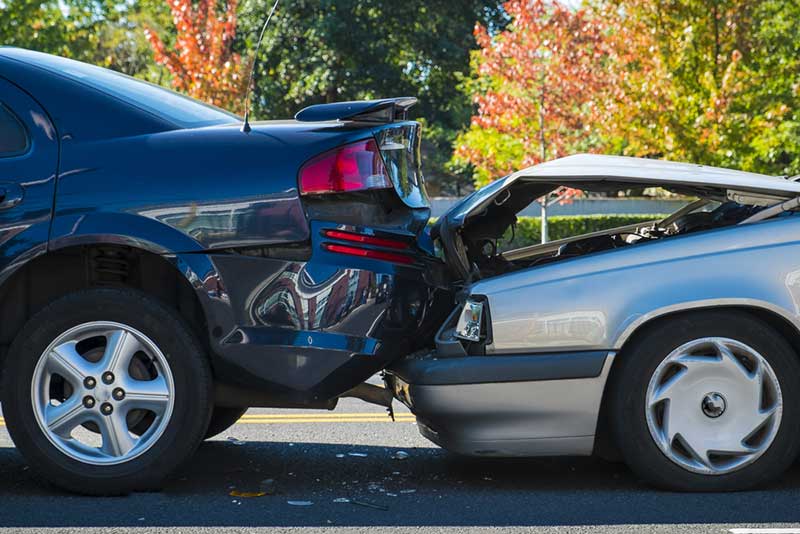Rear-end accidents are a frequent occurrence on California roads, often leading to property damage, injuries and fatalities. Understanding who is at fault in these incidents is critical for both drivers involved. This article will delve deeper into California laws surrounding liability in rear-end collisions.
What Constitutes a Rear-end Accident in California?
Rear-end accidents happen when one vehicle collides with the vehicle in front. Liability for these types of accidents typically rests with the driver of the rear-most car; common scenarios resulting in rear-end collisions include distracted driving, following too closely, sudden stops, or failing to yield.
Rear-End Car Crashes in California: How Does California Law Address Rear-end Collisions?
California law presumes the driver of the rear vehicle to be at fault in rear-end collisions, meaning they should maintain an appropriate distance or be paying attention on the road. However, this presumption can be overcome if evidence demonstrating negligence on behalf of the front driver can be provided as proof.
California follows a comparative negligence system, in which both drivers may be found partially responsible and their respective liabilities may be distributed based on the level of fault assigned to each party.
Are front drivers ever at fault in rear-end accidents? Yes. In certain instances they could be found responsible for rear-end crashes.
Though rear drivers are typically held to blame for accidents, there may be cases in which front drivers share some or all of the responsibility as well. For instance, sudden reverses without prior warning or engaging in brake checking (intentionally applying brakes to induce rear-end collision) by front drivers could potentially put both drivers equally or partially responsible. Other factors like malfunctioning brake lights could also play a part in sharing liability.
How are Multi-car Rear-end Accidents Determined?
Rear-end collisions involving multiple cars, or “chain reaction accidents”, can be especially complex in assessing liability. Each driver’s role must be carefully examined to ascertain who was negligent and to what degree. Furthermore, multiple parties could share in liability depending on their actions leading up to the incident.
After Being Involved in a Rear-end Accident, What Should the First Steps Be?
After being involved in a rear-end accident, prioritizing safety is of utmost importance. First and foremost, check for injuries before moving to a safe location if possible. Evidence collection must also take place immediately following an incident; taking photos at the accident scene, gathering witness information, noting any pertinent details etc are essential elements. It is also vitally important that reports be filed to authorities immediately if injuries or significant property damage has occurred;
Can Damages From a Rear-end Accident Lawsuit in California be Claimed?
Rear-end accident victims in California may be eligible to file a civil suit and seek various types of damages, including medical expenses, property damage claims, lost wages and pain and suffering compensation. Damages may either fall under special or general categories (which can be more subjective and non-economic).
How Does Insurance Play a Part in Rear-end Collision Claims?
California operates under an “at-fault” system, wherein the at-fault driver’s insurance will typically cover damages from their accident. Negotiating with insurance adjusters can be complex; their goal may be to minimize settlement amounts. Therefore, legal representation can help navigate these claims with greater ease and provide peace of mind regarding possible uninsured/underinsured motorist coverage to protect against drivers without sufficient coverage.
How long do victims of California rear-end accidents have to file their claims after experiencing damage?
California law sets forth a statute of limitations for personal injury claims arising from rear-end accidents. Victims generally have two years from the date of accident to file their claims; exceptions exist in cases involving government entities or injuries not immediately evident; it is wise to consult with a car accident attorney regarding what time constraints apply in your specific situation.
Why choose Big Ben Lawyers for rear-end Car accident claims?
If you have been involved in a rear-end car accident in California, having legal representation from Big Ben Lawyers who specialize in rear-end accident cases is vitally important. Their dedicated team of professionals prioritize their clients’ needs while offering a no-win, no-fee guarantee – providing peace of mind to clients as they pursue maximum compensation claims.
Determining liability in rear-end accidents is of vital importance to both drivers involved. California laws presume fault will fall to the rear driver; however, exceptions may exist. For this reason, seeking legal assistance from Big Ben Lawyers can greatly assist victims in successfully navigating these complex claims processes and receiving fair compensation for their losses.
Have You Been Involved in a Rear-End Accident in California? Don’t Wait–Contact Big Ben Lawyers immediately for legal guidance. Their expert team of attorneys will fight hard on your behalf for maximum compensation while upholding your rights throughout the legal process.
Big Ben Lawyers
144 N Glendale Ave.
Suite 250
Glendale, CA 91206

